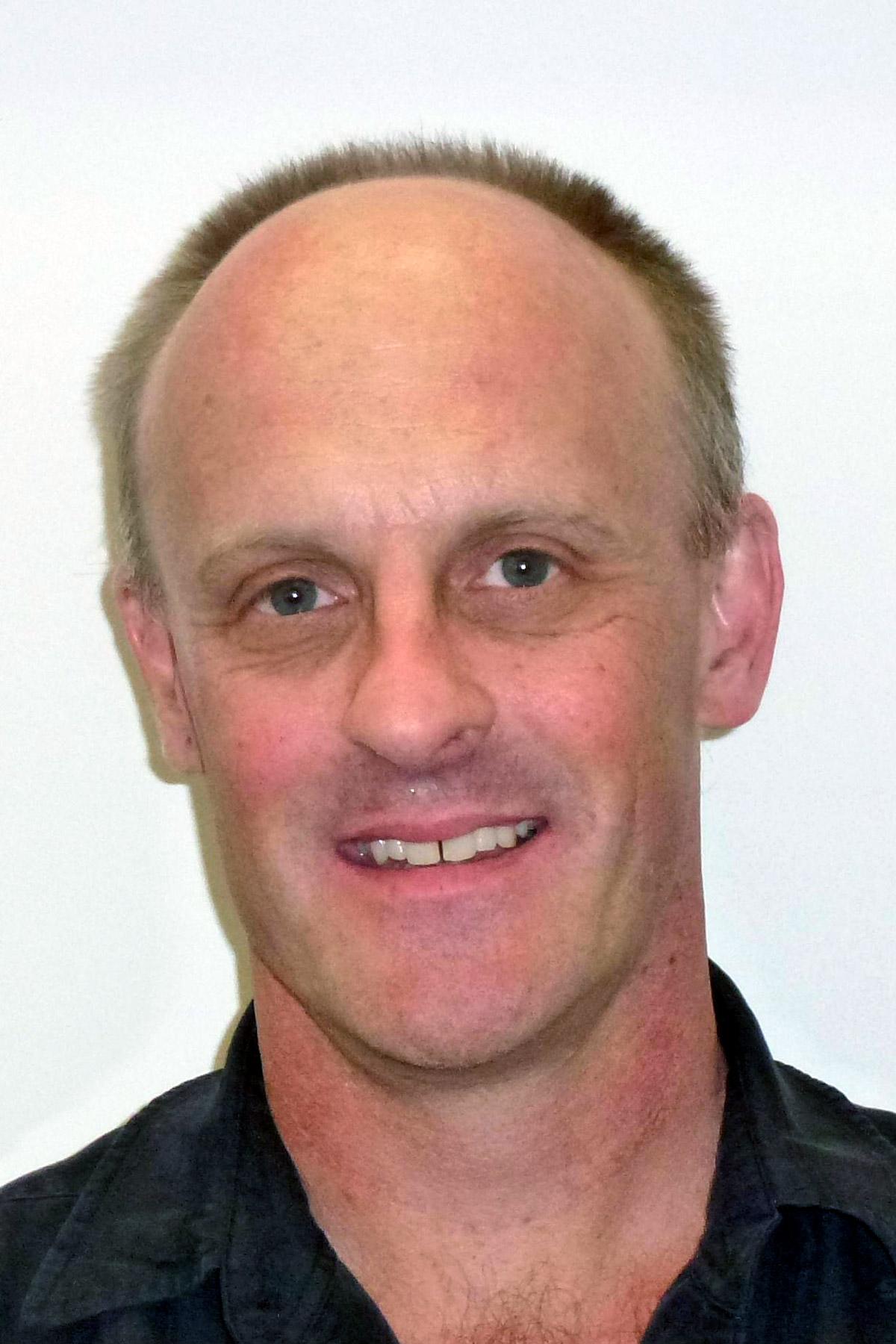$7m boost for sciences research
More than $7 million of new Australian Research Council funding showcases the dynamic breadth of sciences research at the University of Adelaide.
Faculty of Sciences Interim Deputy Dean (Research) Martin White says the newly funded ARC Discovery projects would drive key research and facilitate important discoveries across multiple disciplines.
“Our physicists will be making breakthroughs in our understanding of the structure of matter, and of the highest energy objects ever seen in the universe,” says Associate Professor White.
“Our biologists will drive new treatments for fungal infections, explore new frontiers in crop science, and transform animal conservation efforts.
“Our chemists will pioneer new approaches to nanomaterials and the imaging of cells, and our geologists will map the impact of bushfires and changing rainfall patterns on Australian ecosystems and produce the first high-resolution timeline of early animal evolution.”
Associate Professor White said the Faculty was particularly proud that two early career researchers were recognised with prestigious fellowships.
“These will position Adelaide at the forefront of ancient DNA research in marine science, and produce a new, low-cost laser radar system,” says Associate Professor White.
“All of this research involves collaboration with prestigious international institutes, putting Adelaide at the forefront of global scientific developments.”
New ARC-funded research

Visualising molecular level detail in single cells and intact tissues
- Professor Hugh Harris; Associate Professor Elizabeth New; Dr Martin de Jonge; Dr Simon James; Dr Stefan Vogt; Professor Katherine Franz - $425,000
- Inorganic chemistry
The goal of this project is to deliver a new toolkit for imaging cells at an unprecedented resolution and level of chemical detail. We will expand the capabilities of two existing, but complementary, methods: optical fluorescence microscopy with responsive probes and X-ray fluorescence imaging. Expected outcomes include improved techniques and benchmarks for visualising bacterial and mammalian cells; development of new molecules for elucidating cellular chemistry; better utilisation of valuable synchrotron resources; and greater understanding of the strengths and limitations of current microscopy workflows. Results should benefit the biotechnology sector, and may lead to improved medical, diagnostic, and bioremediation capacity.

Novel cell wall genes ripe for the picking...
- Professor Rachel Burton; Dr Filomena Pettolino - $555,000
- Biochemistry and cell biology
This project aims to investigate the role of recently discovered plant cellulose synthase-like CslM genes and to define the polysaccharide product associated with them. Successful identification of the polysaccharide is highly likely to increase our fundamental understanding of how cell walls are made, how cells stick together or fall apart as well as facilitating the training of the next generation of cell wall biologists in challenging molecular and biochemical techniques. This new knowledge could increase our understanding of fruit ripening, and how it might be manipulated. This could have significant downstream commercial benefits if applied to breeding programs of economically important fruit such as grapes, tomatoes and strawberries.

Harnessing genetic diversity for complex traits
- Professor Peter Langridge; Professor Robbie Waugh; Dr Scott Boden - $629,347
- Crop and pasture production
Genetic diversity underpins crop improvement but has become increasingly narrow in our major crops. Strategies exist for mobilising simple traits (e.g. disease resistance) from wild accessions or landraces into cultivars, but there are no effective approaches for introducing complex traits, including stress tolerance or components of yield. Using barley as an important crop and a genetic model, the project aims to address this problem by applying a novel approach; partial redomestication of wild accessions by introgressing genes required for modern farming, then evaluating the resulting partially adapted germplasm in hybrids with elite cultivars. The project expects to generate new and diverse germplasm pools for breeding.

Exploring the high-energy universe with neutrinos detected in IceCube
- Associate Professor Gary Hill - $475,000
- Astronomical and space sciences
The project aims to use the high energy neutrinos observed by the IceCube detector at the South Pole to uncover the nature of the most energetic objects in the Universe. This project expects to find out what distant objects made the neutrinos, understand their distribution through the Universe, and see if they are also cosmic and gamma ray acceleration and production sites. Expected outcomes of this project include solving this long-standing mystery in high-energy astrophysics, development of new data analysis techniques, training new scientists, and educating the public. These should provide significant benefits to science and society, through a better educated and critical thinking workforce and public, ready to face future challenges.

Evolution and function of mammalian sex chromosomes
- Professor Frank Grützner; Associate Professor Paul Waters; Professor Jennifer Graves; Professor Henrik Kaessmann - $812,340
- Genetics
Research on iconic Australian mammals has profoundly reshaped our understanding of reproductive biology and sex chromosome evolution. In this project we combine unique expertise, international collaboration and novel genetic information about Australia's unique egg-laying mammals (echidna and platypus) to investigate major aspects of reproduction. This work will address fundamental aspects of sex chromosome biology and advance our understanding of mammalian reproduction. The knowledge gained will have application in captive breeding and conservation of these extraordinary Australian mammals. The project also provides opportunity to train research students in cutting edge molecular biology and informatics.

Predicting concentration-gradient-driven liquid transport in 2D membranes
- Associate Professor David Huang - $330,000
- Theoretical and computational chemistry
This project aims to achieve a predictive understanding of liquid transport through two-dimensional (2D) membranes driven by concentration gradients by using a combination of novel theory and computation. Membranes made from 2D nanomaterials hold great promise for many applications from desalination to power generation to chemical sensing, but the concentration-gradient-driven transport processes that underlie these applications are not well understood. The expected outcome of this project is an unprecedented quantitative understanding of the parameters that control these transport processes. This will enable predictive optimisation of 2D membranes, which will reduce the time and cost of membrane development for diverse applications.
Unravelling cell wall polysaccharide biosynthesis in pathogenic zygomycetes
- Professor Vincent Bulone - $503,315
- Biochemistry and cell biology

This project aims to define mechanisms that control cell wall composition and stability in Rhizopus oryzae, a zygomycete fungus responsible for life-threatening human infections. The biochemical properties and function of vital enzymes involved in a newly discovered cell wall polysaccharide biosynthetic pathway will be determined using innovative approaches at the interface of biochemistry, microbiology, cell biology and structural biology. Expected outcomes include new knowledge on the enzymes that synthesise major fucose-based carbohydrates, to guide the future development of novel strategies for antifungal therapies. The data will also be applicable to animal protection from related zygomycete pathogens.
Emergent phenomena in the foundation of matter
- Professor Derek Leinweber - $535,000
- Atomic, molecular, nuclear, particle and plasma physics

This project aims to explore the finite-matter-density features of the relativistic field theory of the strong interactions, Quantum Chromodynamics (QCD). Drawing on national supercomputing resources, this project will undertake QCD calculations of unprecedented complexity to discover emergent phenomena in the ground-state quantum fields that form the foundation of matter. By studying their evolution under temperature and matter density and exploring their contribution to the structure of the nucleon and its excitations, the research will advance theoretical understanding and challenge experimental programs. Benefits include transferable skills in advanced analytical techniques, high-performance computing, and scientific data visualisation.
Image by Padric McGee - Department of Physics
Decoding tissue-specific components of cereal grain development
- Associate Professor Matthew Tucker; Professor Dr Lucia Colombo - $540,168
- Plant biology

This project aims to investigate how barley flowers produce cells that deliver nutrients into developing seeds. This project expects to generate new knowledge through international collaboration and technical improvements in cell biology and genetics, overcoming current methodological limitations to precisely influence seed size, shape and quality, which are traits of agricultural relevance to the Australian cereal industry. Expected outcomes include strengthened international partnerships, leveraged funding and increased knowledge of plant reproduction. This should provide significant benefits, including upskilled researchers, improved research capacity and genetic targets to optimise seed production in challenging climatic conditions.
Drivers of the live pet trade in Australian reptiles
- Associate Professor Phillip Cassey; Dr Reid Tingley; Associate Professor John Measey; Dr Thomas Prowse; Professor Julie Lockwood - $420,851
- Environmental science and management

This project aims to understand the complex trade in live Australian reptiles. The global pet trade is a major threat to biodiversity. This project expects to generate critical new knowledge for combatting the current and future illegal trade in Australian wildlife. Using surveillance of domestic and overseas online markets, and innovative statistical and simulation-based approaches to inform conservation decision-making, the expected outcomes of this project include an enhanced capacity to conserve native species and to monitor and disrupt the complex illegal wildlife trade. This should provide significant benefits in terms of biodiversity conservation and safeguarding Australia’s unique and ecologically important native reptile species.
Investigating a novel signalling pathway for crop improvement
- Professor Matthew Gilliham; Professor Rainer Hedrich; Dr Johannes Kromdijk - $509,000
- Plant biology

This project will dissect a newly identified signalling pathway in plants that regulates plant water use and carbon gain. It will deploy multiple techniques, including novel biosensors, to understand the links between the metabolism of plants and their environmental responses. The project will build partnerships with scientists at leading international institutions for enhanced outcomes, including access to specialised equipment and upskilling of our scientists. The generation of barley with the latest gene editing techniques aims to produce a non-GM crop with the potential for enhanced root C sequestration, lower water use and improved yield, three key goals for agricultural sustainability in the face of a drying Australian climate.
Fire and rain: Drivers of deep-time ecosystem assembly in Australia
- Dr Francesca McInerney; Professor Gavin Prideaux; Dr Kale Sniderman; Professor Katherine Freeman; Professor Caroline Stromberg; Dr Caroline Lehmann; Associate Professor Pratigya Polissar - $476,000
- Geochemistry

This project aims to investigate the influence of bushfires and shifting rainfall patterns on the development of Australia’s dominant ecosystems. By combining a range of novel geochemical, isotopic and palaeontological techniques, this research seeks to reveal the causes and consequences of Australia’s transformation from a forested to mainly open landscape of grassland, shrubland and savannah. The expected outcome is detailed knowledge of how changes in fire and rain shaped the ecology and evolution of plants and animals. This knowledge is key to understanding how Australian ecosystems function and to protecting their cultural, economic and environmental values, especially as climate and fire regimes continue to change into the future.
Glauconite: archive recording timing and triggers of Cambrian radiation
- Dr Juraj Farkas; Professor Glenn Brock; Professor Graham Shields; Dr Stefan Löhr; Professor Alan Collins; Dr Andre Baldermann; Dr Thomas Zack - $390,000
- Geology

This project aims to constrain the timing and speed of the Cambrian radiation of complex animals, and to test potential environmental triggers of this milestone bioevent. New laser mass spectrometry and mineral mapping technology will be integrated to precisely date glauconite – a silicate mineral commonly formed in Cambrian shallow marine animal habitats. This innovative and cost-effective approach will produce the first high-resolution timeline of early animal evolution, where the glauconite-based marine isotope record identifies the most likely environmental trigger for the Cambrian Radiation. Outcomes of this study include improved understanding of the drivers of animal evolution, and a new dating tool for basic and applied research.
Discovery Early Career Researcher Award
- Dr Linda Armbrecht - $462,948
- Oceanography

This project aims to utilise ancient DNA preserved in the seafloor to investigate how past Antarctic marine ecosystems have responded to past climatic changes, with a focus on the Holocene (last ~11,700 years). The study will generate the first-ever picture of marine community changes across the entire marine food web and unravel adaptation mechanisms of key marine organisms to climate shifts. Expected project outcomes will include significant knowledge advances into the evolution and resilience of Antarctic ecosystems over geological timescales. This will position Australia at the forefront of marine sedimentary ancient DNA research, and also provide valuable guidance for the conservation of Antarctica during ongoing climate change.

Discovery Early Career Researcher Award
- Dr Wenle Weng - $385,322
- Physics / Electrical and electronic engineering
This project aims to develop the science that would enable a new low-cost laser radar (LIDAR) for imaging the world around us. LIDAR has applications in facial recognition, forestry and autonomous vehicles – our new device will uniquely offer the ability to work underwater thereby opening up new possibilities for maritime environmental and vehicle monitoring. Our approach exploits a new form of optical pulse propagation in precisely shaped crystals to generate bespoke laser pulses that enable high-speed and precise ranging to targets of interest. The science behind these new types of optical pulses offers the ability for Australia to lead a new scientifically and industrially important field.
